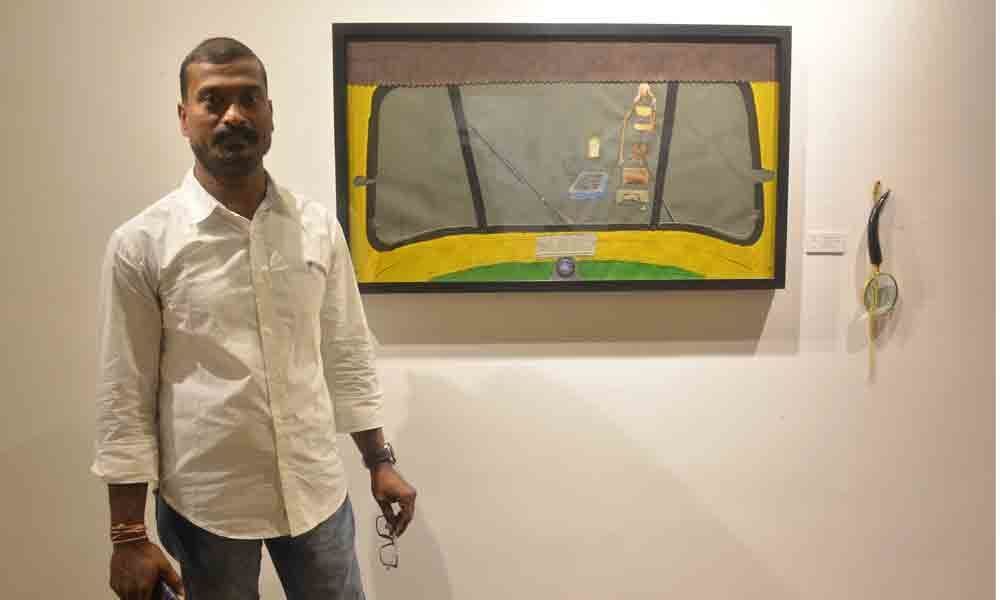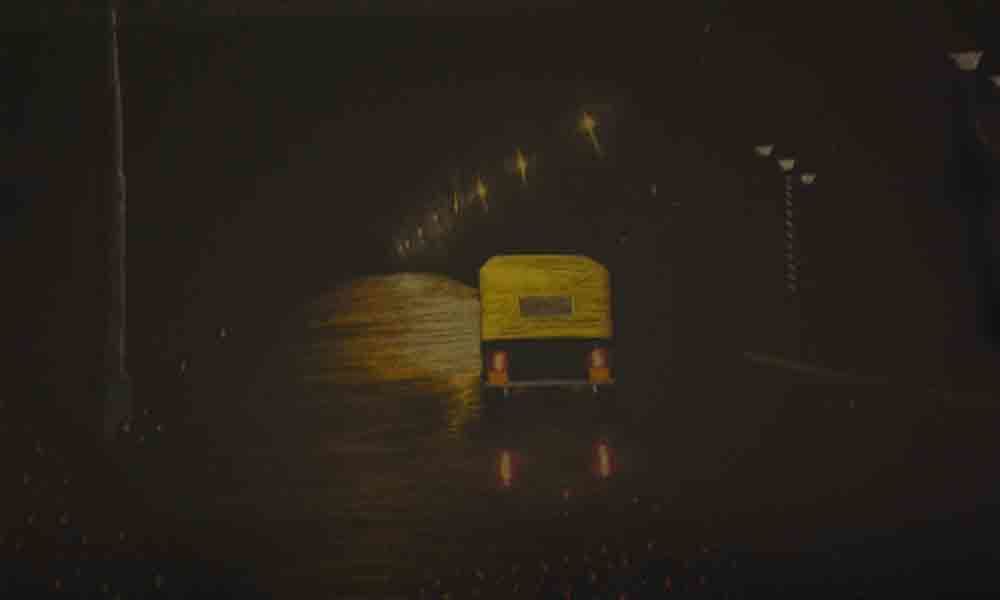Live
- Lemon vendor Mallamma files nomination
- Hyderabad: Sneha Mehra appointed as DCP (South)
- Hyderabad: HMWSSB training programme concludes
- Hyderabad: GHMC summer camps kick off
- All set for Polycet-2024 tomorrow
- Dr Srinivas gets best veterinary surgeon award
- Hyderabad: Jobs top debutant voters’ wish list
- Devotees rush increases at Tirumala today, to take 8 hours for sarva darshans
- Sajjala denounces Naidu’s ‘heinous politics’
- NDA parties release ‘charge sheet’ against Jagan
Just In
The traditional and age-old medium of needlework on cloth, embroidery, takes a novel stance in the series of works rendered by Kolkata-based artist Bapi Das.
The manual needle work attains a marvellous, unbelievably flawless and true to life perfection that fascinates and charms the viewer tremendously.
His journey was not as normal as any other artist. He worked at a stainless-steel factory before that he drove an auto for a living.
He says, "I was fond of painting since my childhood. Problems at my house put an end to my painting, drawing and studies. I took up private classes and cleared my matriculation exams and I took drawing lessons from my old drawing teacher.
But, I was not satisfied with what I was doing. I felt that I needed a to upgrade my skill. So, I started searching for a teacher and I met Kolkata-based artist Avijit Dutt, and in hindsight I can say it was a God's gift."
Bapi informs that he owes everything to Avijit Dutta, who now guides him in every aspect of life, down to the material of the shirt he is wearing. He says, "The shirt that I wore and the watch of mine is chosen by him, so we share that kind of a relation.
This is a privilege for me. I never thought I would do this, but whatever I do that are different from others."
Whatever job Bapi took up, he had his signature style. Be it as a mason or an auto driver. "Once I saw 'thread paintings' exhibition at Ava Art Gallery, Darjeeling, and I liked the three-dimensional effect. As artists express their emotions in their works, so I do through stitches. I hadn't done any stitching before. But I started working on circular embroidery frame and later I made my own frame which will not affect my spinal cord and eyes," he smiles.
About technique of his art work he says, "I always wanted people to like me and my work.
I used to observe my sister and her friends, their scarves, handkerchiefs, etc. I use the duppata threads in my art works, so I ask it from people if I like their duppata or I buy it and use it for my art."
His family is happy now that Bapi has become an artist. He says that he doesn't want to change his lifestyle and continues to live like old times.
"My mother is very happy when she looks at me, it is all new for her. And my mother is my priority.
My lifestyle is the same, I feel that it will be difficult if I change it. I don't prefer an expensive lifestyle at all; whatever my mother cooks at home I have it. I don't want a luxurious home. I stay in a single room where my mother cooks and then I start my work."
The portrait and the narrative series on Kolkata took him to Kochi-Muziris Biennale 2018. "I am happy, and it was a great experience. I never thought I will go there one day," he smiles.
In sync with the past years spent driving an auto rickshaw for a living; his visual allegories absorb much from his background and history. He builds an intricate, intriguing journey on his medium of expression which is still rooted in his past experiences and time spent exploring the roads while driving.
One of his painting which is close to his heart is a stunning image of an auto on a rain-drenched night. "In Kolkata, there are some areas where you find autos 24/7.
Some of autos run without registration numbers. You can see one such auto, which I captured through the windscreen of my auto," he says.
One of his works titled 'Missing Route' juxtaposes an interesting set of visuals arranged in a geometrically spanned, simplified and abstract looking space. The rearview mirror, with the drawing of a map, metaphorically symbolises the element of uncertainty and suspense in the life of a traveller.
On the other hand, the detailed section depicted on a circular mirror reinstates a relaxed stance of the driver, perhaps of the one who is calm and believes in peaceful existence.
The extent of the space created in the work by the artist is allegorical and personal, revealing and concealing, metaphorical as well as sublime.

© 2024 Hyderabad Media House Limited/The Hans India. All rights reserved. Powered by hocalwire.com









